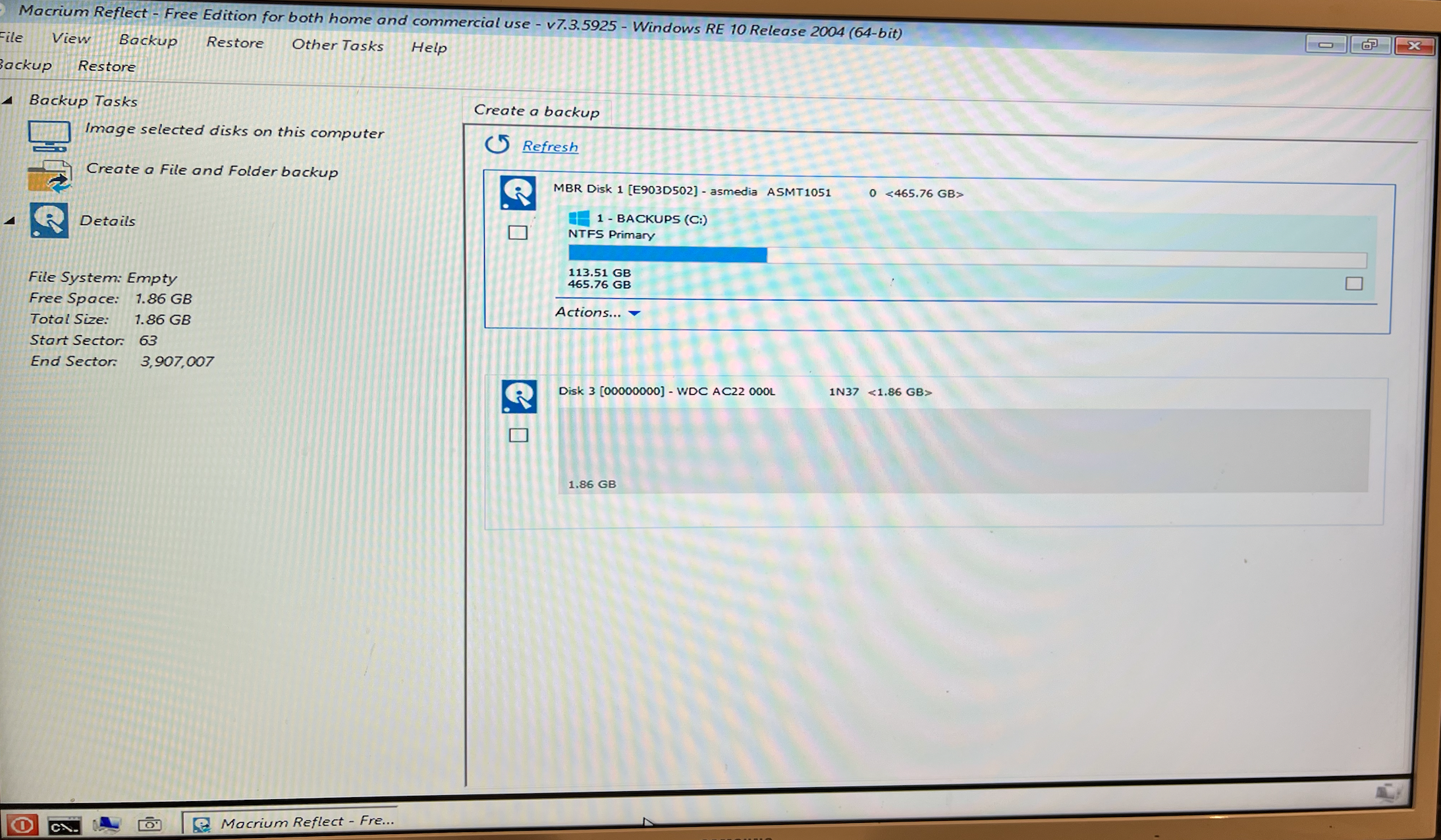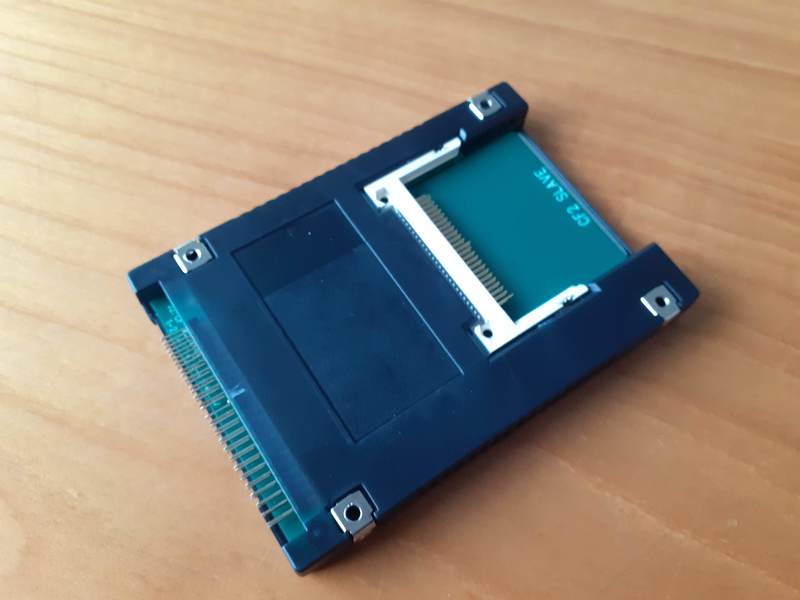timeshifter
Well-Known Member
- Reaction score
- 2,494
- Location
- USA
Preface, client in industrial setting, Windows 95 PC connected to a piece of equipment that is functioning well. To replace it with something modern would cost upwards of $50,000. The PC is connected using some kind of board using a cable that I didn't immediately recognize (I didn't unplug the cable), maybe a 50 pin D connector. Not really important what it is, but mentioning as I think it's presence makes converting this to a VM non-doable.
They want a backup of the drive / system in case something goes wrong. My plan was to make an image backup of the whole system.
Before I removed the drive I shut the system down then started it back up again. It started up fine.
I removed the drive and connected it to another system using an IDE to USB 2.0 adapter. Was using a bootable Macrium Reflect. It wouldn't backup the drive because it would let me select it. It saw the 2GB drive but said the file system was "empty".

I became a little panicked and put the drive back in the PC. It booted but wanted to run Scandisk but it didn't and mentioned something about not enough memory and to set files and buffers or something. Was able to skip past that and the machine is running OK. Note that those errors weren't present on my first shutdown and restart before removing the drive.
My ultimate goal would be to get a good image backup and then clone it to a new drive, maybe an IDE SSD like this one
https://www.amazon.com/128GB-KingSpec-2-5-inch-SM2236-Controller/dp/B008RVN97A?th=1 Not that they need the speed but I'm thinking it would be safer than a spinner - although this spinner is 25 years old (eek).
Thoughts?
They want a backup of the drive / system in case something goes wrong. My plan was to make an image backup of the whole system.
Before I removed the drive I shut the system down then started it back up again. It started up fine.
I removed the drive and connected it to another system using an IDE to USB 2.0 adapter. Was using a bootable Macrium Reflect. It wouldn't backup the drive because it would let me select it. It saw the 2GB drive but said the file system was "empty".

I became a little panicked and put the drive back in the PC. It booted but wanted to run Scandisk but it didn't and mentioned something about not enough memory and to set files and buffers or something. Was able to skip past that and the machine is running OK. Note that those errors weren't present on my first shutdown and restart before removing the drive.
My ultimate goal would be to get a good image backup and then clone it to a new drive, maybe an IDE SSD like this one
https://www.amazon.com/128GB-KingSpec-2-5-inch-SM2236-Controller/dp/B008RVN97A?th=1 Not that they need the speed but I'm thinking it would be safer than a spinner - although this spinner is 25 years old (eek).
Thoughts?



